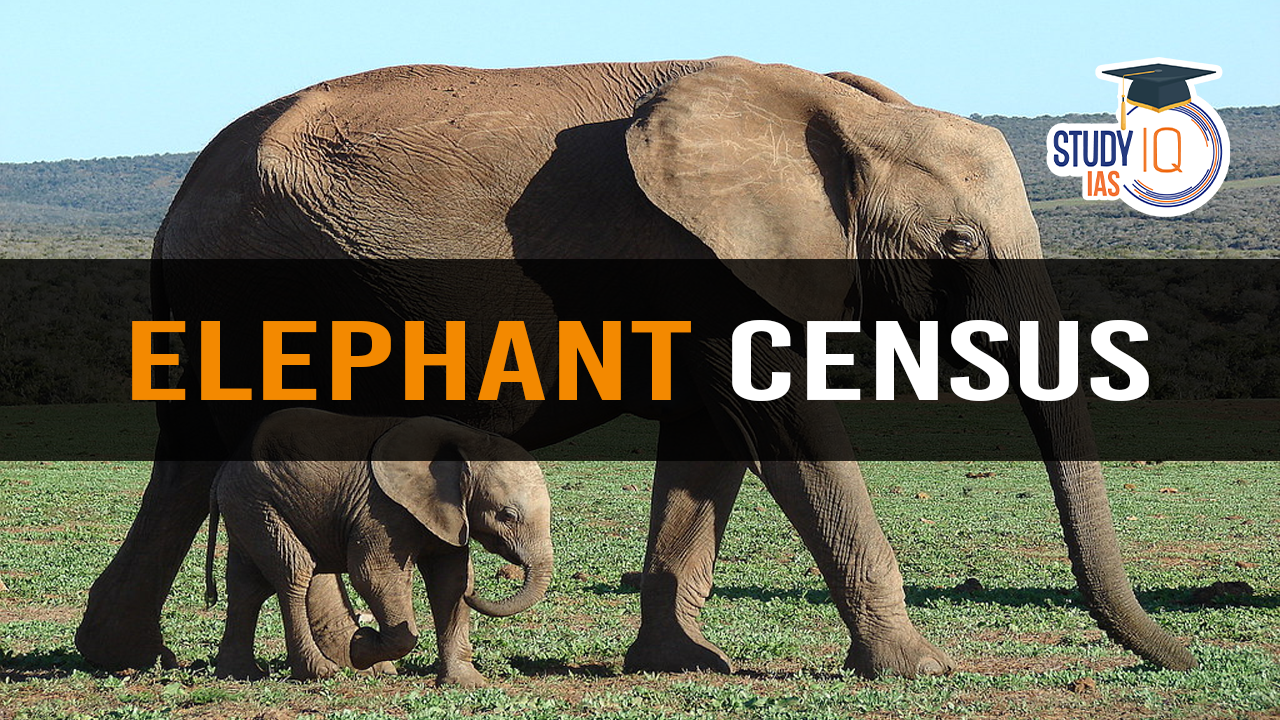Table of Contents
The “Status of Elephant in India 2022-23” report by the Environment Ministry highlights a declining elephant population. Its release is delayed due to pending census data from northeastern states.
The Ministry of Environment Forest and Climate Change suspended the release of the elephant census report, ‘Status of elephants in India 2022-23’, citing the delay in the census in the Northeast.
Key Findings from the Report of Status of Elephants in India 2022-23
- Population Decline:
- The report indicates a 20% drop in the overall elephant population compared to 5 years ago.
- The Central Indian and Eastern Ghats regions experienced an alarming 41% decline since 2017.
- Specific states reported significant losses:
- Southern West Bengal: 84%
- Jharkhand: 68%
- Orissa: 54%
- Threats Identified:
- Rapid expansion of projects such as unregulated mining and infrastructure development.
- Increased human-elephant conflicts.
- Other threats include poaching, railway collisions and electrocution.
Elephant Census in India
- Conducted every 5 Years.
- Conducted by: Wildlife Institute of India (Autonomous body under MoEFCC)
- Methodology Used: DNA Profiling & Camera Traps
| Facts |
|
How are elephants counted?
- The elephant census is conducted every 5 Years by the Wildlife Institute of India (WII).
- Total direct count: Till 2002, elephants were counted by the total direct count method i.e. a simple head count method.
- However, the method has its limitations and lacks a scientific basis for large landscapes.
- Indirect dung counting: In 2002, an indirect dung counting method was introduced in the Southern region. The data from the dung decay rate was used to determine the density of elephants in the area.
- Along with this, the total direct count was replaced by the sample block count method involving a survey of a limited area (5 sq.km.) to maximise the probability of detecting elephants.
- Genetic mark-recapture method: This year, the government decided to converge the census of elephants with the tiger census. It involves using scientific techniques like mark-recapture. For elephants, the genetic mark-recapture method was proposed to be used.
- Since elephants have no unique stripes like tigers, dung samples of elephants have been used to identify unique elephants through genetic mark-recapture method.
Asian Elephants
- 3 subspecies – Indian, Sumatran, and Sri Lankan
- Protection Status of Asian Elephants
- IUCN Red List: Endangered.
- Wildlife (Protection) Act, 1972: Schedule I.
- CITES: Appendix I
Characteristics
- The largest terrestrial mammal on the Asian continent.
- The largest and oldest female elephant herd member is in charge (known as the matriarch) of the herd.
- Elephants’ gestation (pregnancy) period, which can last up to 680 days (22 months), is the longest known gestational period among any mammals.
- Females between the ages of 14 and 45 may give birth to calves every 4 years on average, increasing to 5 years by age 52 and 6 years by age 60.
- Elephant herd sizes in Asia are far smaller than those of African savannah elephants.
| UPSC PYQ |
Q. With reference to Indian elephants, consider the following statements: (2020)
Which of the statements given above is/are correct? (a) 1 and 2 only (b) 2 and 4 only (c) 3 only (d) 1, 3 and 4 only Answer: A |


 Hydrogen For Net-Zero Economy, Governmen...
Hydrogen For Net-Zero Economy, Governmen...
 Mantis Shrimp - Latest Research News and...
Mantis Shrimp - Latest Research News and...
 Cheetah Project Steering Committee Key R...
Cheetah Project Steering Committee Key R...





















